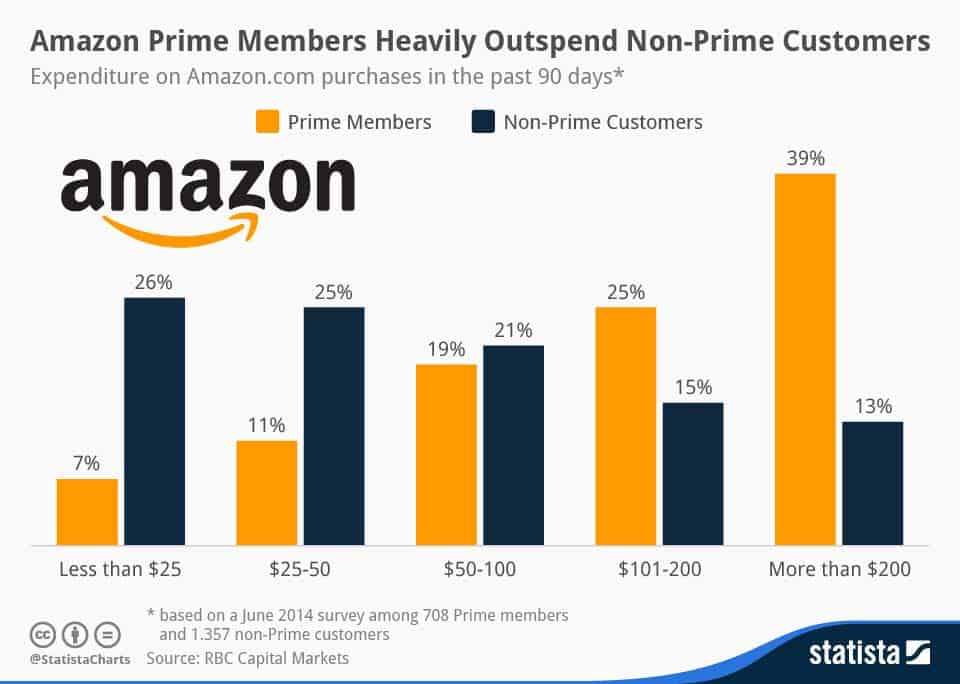10 Reasons Your Inbound Marketing Strategy is Failing Miserably
10 Reasons Your Inbound Marketing Strategy is Failing Miserably
Creating a successful inbound marketing strategy is one of the most complex tasks and online marketer can possibly undertake. Any successful inbound marketing strategy requires marketers to embrace a range of tactics including content generation, PPC advertising, SEO, conversion rate optimization, lead generation/management and much more.
Even when you embrace all of these tactics though, an inbound marketing strategy can still fail miserably and conversions can be frustratingly scarce. More often than not, it’s seemingly small mistakes that lead to this failure by punching holes in your sales funnel (causing a leakage of potential sales and leads).We’ve rounded up ten of the most common mistakes inbound marketers make below. We urge you to avoid them at all costs.
#1 – You’ve incorrectly identified your target market (or haven’t identified them at all)
A crucial part of planning your inbound marketing strategy is to identify your target market and ideal customer. It’s important to think about who it is that you’re trying to attract and why are you trying to attract them.This process might seem quite straightforward but if you don’t do it correctly, all of your inbound marketing efforts (including content creation and PR) will fail miserably.
For example, let’s assume that you run a freelance writing business. You might assume that your target market consists of content marketing and SEO companies who are looking to outsource their content creation work to freelancers like yourselves. Seems logical, right?
However, you might find that content marketing agencies aren’t prepared to pay as much for content as you might have hoped and therefore, they aren’t really your ideal customers. In reality, you might be better targeting companies directly and ‘cutting out the middle man’, thus increasing your profits.If you were to target content marketing agencies and SEO companies, you’d likely start creating SEO related content and posting on other SEO blogs. On the other hand, if you were targeting companies directly, it would be wiser to post on business-related blogs.
You can see how important identifying your target market and ideal customer is when it comes to defining an inbound marketing strategy, so make sure you’re targeting the right people.
#2 – You haven’t clearly defined your goals
A lot of websites have multiple income streams; there’s display advertising, affiliate sales, direct sales and many other monetization strategies that contribute to a websites ‘bottom line’.While having multiple income streams is always a wise move, it can confuse things when you’re preparing an inbound marketing strategy.
Inbound marketing is predominantly all about attracting targeted website traffic; the problem is that if you don’t know what action you want that traffic to take when they actually reach your site, it’s going to be hard to convert that traffic into customers/conversions.Do you want people to buy your product, buy a product through an affiliate link or just click on your display ads? Whatever the answer is, you need to formulate your inbound marketing strategy around attracting an audience that is likely to take that particular action.
#3 – Your website is too confusing
You might be attracting hundreds and thousands of targeted leads every single day thanks to your inbound marketing efforts but if those leads don’t understand what action they’re supposed to take when they reach your site, your conversion rate is going to suffer.Remember, visitors to your website should be entering your sales funnel. If your funnel is blocked by a confusing and difficult to use website, it’s highly likely that much of the traffic you’ve worked hard for simply won’t progress to the next stage of the funnel.
There’s a lot of things that could be making your website confusing and blocking your funnel. Poor site design and a confusing navigation menu are perhaps the most common problems. If you’ve got too many buttons to click, too many ads or too many calls to action, visitors simply aren’t going to know where to click and thus, will waste no time in leaving your site without any hope of converting to a customer.Whatever you want your visitors to do (e.g. buying your product, giving you their email address etc.), you need to minimize any other distractions on your site. Make sure their attention is focused on the part(s) of your website you want their attention to be focused on and nothing else.
#4 – Your website isn’t search engine friendly
When you’re spending countless hours producing high quality content for your sites blog, embracing guest posting opportunities and embarking on other PR related activities; you want to be rewarded with an influx of targeted traffic for your efforts.Typically, as you produce more content, obtain more mentions and gain more backlinks for your site, you’ll notice that a good chunk of your traffic will start coming from the search engines (Google, Yahoo etc).
However, if your website isn’t search engine friendly, this might not be the case.Although you might have great content, it’s important to make sure that it’s formatted correctly and offers the search engines everything they need to be able to index it properly.You need to make sure you’re using H1 – H6 tags properly, linking out to reputable sources and all that good stuff (here’s a great SEO starter guide from Moz if you need some pointers).
Without a search engine friendly website, you won’t get as much targeted traffic from the search engines and thus, you could potentially be missing out on hundreds and thousands of high quality targeted leads.
#5 – Your content simply isn’t good enough
Typically, any inbound marketing strategy is highly focused on content creation; we’re talking blog posts (either for your own blog or PR/guest posting opportunities), infographics, videos, PDF’s and even whitepapers. All of these have the power to generate some serious targeted traffic when they’re done well.
The problem is that so many websites simply aren’t investing enough time, effort or money in high quality content creation. It’s likely that the vast majority of traffic to your website generated from the types of content mentioned above will be new visitors (i.e. people that have only just been introduced to your website/company through that piece of content).Now, let’s assume that the content wasn’t up to scratch (a poorly-written $3 non-native blog post, perhaps?), do you really think that visitor is likely to stick around or come back to your website? Probably not.
Do you think they’re going to trust your website/company enough to progress through the next stage of your sales funnel and perhaps even part with some of their hard-earned cash? Definitely not.Great content is the lifeblood of any well-structured and well-executed inbound marketing strategy, so make sure it gets the attention it deserves and needs.
#6 – You’re blogging about the wrong things
Blogging is a great way to generate traffic for your website but if you’re blogging about the wrong things, that traffic won’t progress to the next stage of your sales funnel and therefore, will be almost entirely worthless.Let’s assume that you’re running a men’s health/fitness website for instance. You have a blog but ultimately, you want your sites visitors to convert to a free trial of your cloud-based bodybuilding diet generator (i.e. a monthly subscription service).You might do some keyword research and find that there are high search volumes for keywords such as “how to lose weight” or “is coffee good for you”. On the face of it, these might seem like great long-tail keywords for a couple of targeted blog posts, but in reality, this might not be true.
You’ve got to think about the audience for those keywords. In this instance, it’s quite likely that more females will be searching for those topics than males. Therefore, as a men’s health/fitness website with a product aimed solely at men, this traffic is almost worthless to you.Make sure your content is as targeted as possible as doing so will increase conversion rates.
#7 – You’re not using social media properly
According to this infographic from Hubspot, roughly two-thirds of U.S. internet users regularly use a social network. From that, it’s clear that social media is a huge part of almost any successful inbound marketing strategy; the problem is that so many companies get it completely wrong.There’s more to inbound marketing on sites like Facebook and Twitter than simply sharing your blog posts every now and again. You need to be actively getting involved with and engaging your followers.
Don’t just spam people with your content; nobody likes a self-promoter. Instead, ask engaging questions and take part in the discussion. Respond to questions directly and offer great information.If you can build trust with your social media following and keep them actively engaged, they’re likely to keep coming back to your website and at some point, progress to the next stage of your sales funnel and ultimately, progress to the bottom of your funnel and convert to a customer.
There’s no problem being self-promotional on social networks from time-to-time (e.g. posting a special offer), but make sure it’s not every other tweet/update or you’ll just annoy and alienate potential leads.
#8 – You’re spending too much (and focusing too much) on PPC
PPC advertising can be a great way to get targeted traffic to your website in an instant. Unlike tactics like SEO, PPC can be set up in minutes and can bring thousands of targeted visitors within the hour quite easily.While PPC can often be a fundamental part of your inbound marketing strategy, you need to make sure that it isn’t your sole focus. You also need to make sure that you’re not spending too much money on it.
The main problem with focusing too heavily on PPC advertising that typically, it will drive your CPA (Cost Per Acquisition) up. Because you’re paying for each and every visitor, you’ll end up spending crazy money if your website isn’t extremely well optimized for conversions.It’s also worth noting that while you may be able to drive significant traffic from PPC campaigns, roughly 70% of search engine users click on organic listings. Because of this, SEO is likely to be a more cost effective solution for most companies in the long run. It’ll also bring more traffic.
#9 – Your landing page isn’t up to scratch
Landing pages are the highly optimized pages that allow you to convert regular website traffic into fully-fledged leads (or even sales). However, if your landing page isn’t to scratch, you’ll almost certainly be missing out on a ton of leads.Although your landing page might look great and be converting some of your traffic into leads, it’s almost certain that it can still be improved. If you’re not constantly testing and experimenting with your landing page(s), you’re quite literally throwing money down the drain and missing out on potential leads/sales.
You should be constantly testing different calls-to-action, headlines, layouts, color schemes and even the wording of your landing page(s). When doing this, make sure to A/B split test (or even better, perform multivariate testing) to see the effect that each change has on your conversion rate.It’s a time-consuming and tedious task but for many businesses, a conversion rate increase of just 5% – 10% can easily bring in hundreds and thousands of dollars of additional revenue per year, so it’s well worth making the effort.
#10 – You don’t have enough landing pages
If your company only utilizes one landing page for your product/service, then chances are that you’re missing out on a ton of leads and have a huge flaw in your inbound marketing strategy.
Even if you only have one product/service to sell, you will almost always benefit from utilizing multiple landing pages, as you’ll be able to better target visitors at various stages of your sales funnel.For example, a new visitor who has just been introduced to your website/company through a well-written blog post might not be ready to commit to buy just yet, but they might be happy to part with their name and email address in exchange for a free eBook.
On the other hand, a visitor who has visited your site many times and follows your social media profiles might be more inclined to convert to a paying customer.Therefore, it would be wise to show these two visitors different landing pages; one for a free eBook download and one pitching/selling your product.
Conclusion:
The key takeaway here is that no inbound marketing strategy is perfect. Sure, your strategy might not be failing miserably and you might be pulling in a good number of new leads/sales ever day, but it would be naive to believe that it can’t be improved dramatically. We suggest taking a look at every aspect of your inbound marketing strategy and checking for any mistakes mentioned above.
Check your blogging strategy, your landing page design and copy, your end goals, your social media profiles and even your website copy for mistakes and fix any problems immediately. You’re losing money if you don’t.
Come back and let us know what you changed in the comments section below. We’d love to know how it improved your overall inbound marketing strategy and conversion rate.



